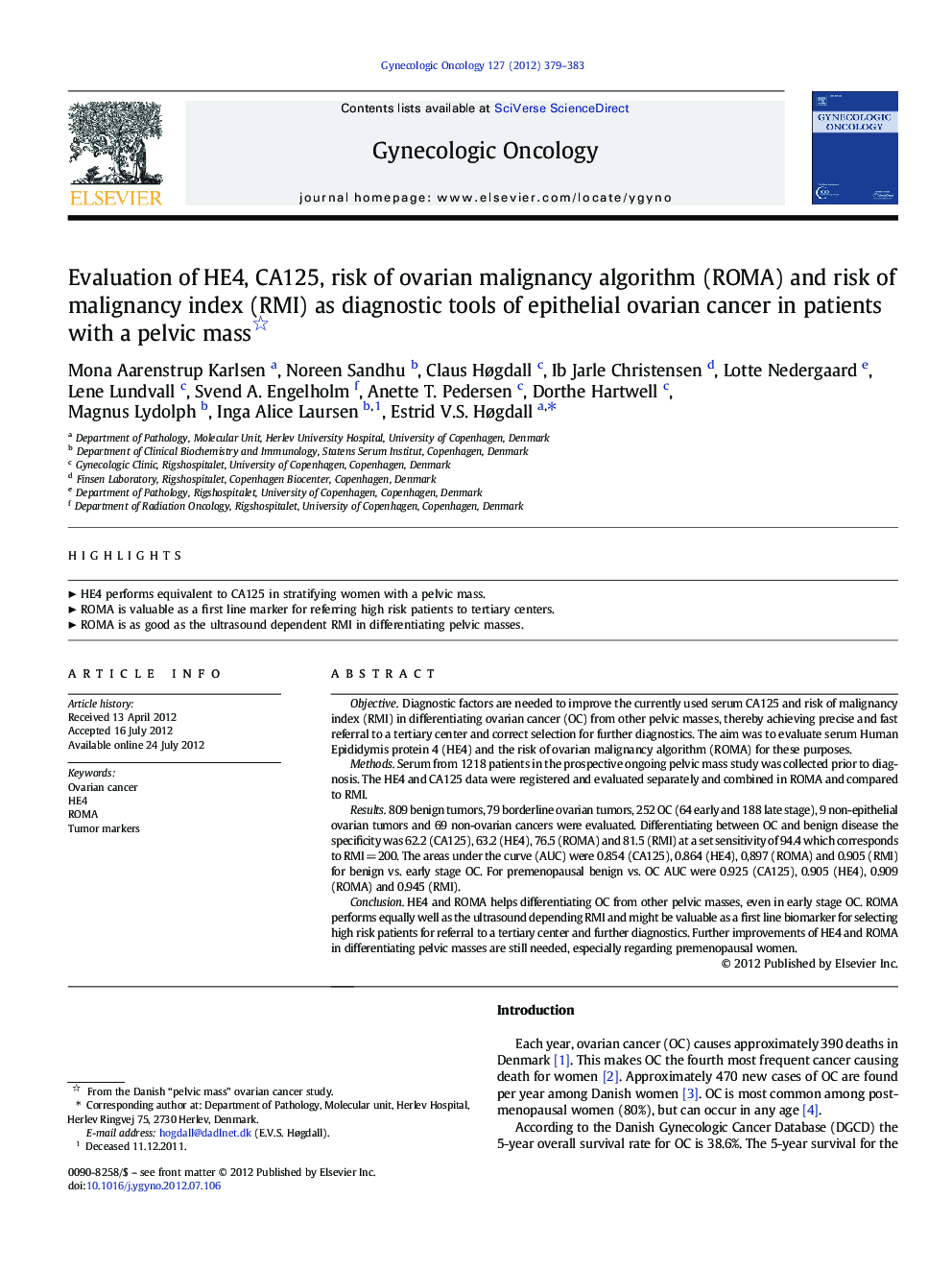| کد مقاله | کد نشریه | سال انتشار | مقاله انگلیسی | نسخه تمام متن |
|---|---|---|---|---|
| 3944933 | 1254242 | 2012 | 5 صفحه PDF | دانلود رایگان |

ObjectiveDiagnostic factors are needed to improve the currently used serum CA125 and risk of malignancy index (RMI) in differentiating ovarian cancer (OC) from other pelvic masses, thereby achieving precise and fast referral to a tertiary center and correct selection for further diagnostics. The aim was to evaluate serum Human Epididymis protein 4 (HE4) and the risk of ovarian malignancy algorithm (ROMA) for these purposes.MethodsSerum from 1218 patients in the prospective ongoing pelvic mass study was collected prior to diagnosis. The HE4 and CA125 data were registered and evaluated separately and combined in ROMA and compared to RMI.Results809 benign tumors, 79 borderline ovarian tumors, 252 OC (64 early and 188 late stage), 9 non-epithelial ovarian tumors and 69 non-ovarian cancers were evaluated. Differentiating between OC and benign disease the specificity was 62.2 (CA125), 63.2 (HE4), 76.5 (ROMA) and 81.5 (RMI) at a set sensitivity of 94.4 which corresponds to RMI = 200. The areas under the curve (AUC) were 0.854 (CA125), 0.864 (HE4), 0,897 (ROMA) and 0.905 (RMI) for benign vs. early stage OC. For premenopausal benign vs. OC AUC were 0.925 (CA125), 0.905 (HE4), 0.909 (ROMA) and 0.945 (RMI).ConclusionHE4 and ROMA helps differentiating OC from other pelvic masses, even in early stage OC. ROMA performs equally well as the ultrasound depending RMI and might be valuable as a first line biomarker for selecting high risk patients for referral to a tertiary center and further diagnostics. Further improvements of HE4 and ROMA in differentiating pelvic masses are still needed, especially regarding premenopausal women.
► HE4 performs equivalent to CA125 in stratifying women with a pelvic mass.
► ROMA is valuable as a first line marker for referring high risk patients to tertiary centers.
► ROMA is as good as the ultrasound dependent RMI in differentiating pelvic masses.
Journal: Gynecologic Oncology - Volume 127, Issue 2, November 2012, Pages 379–383